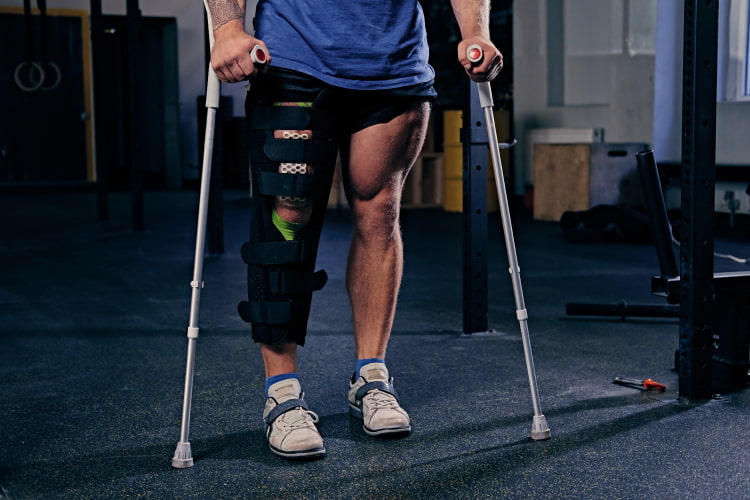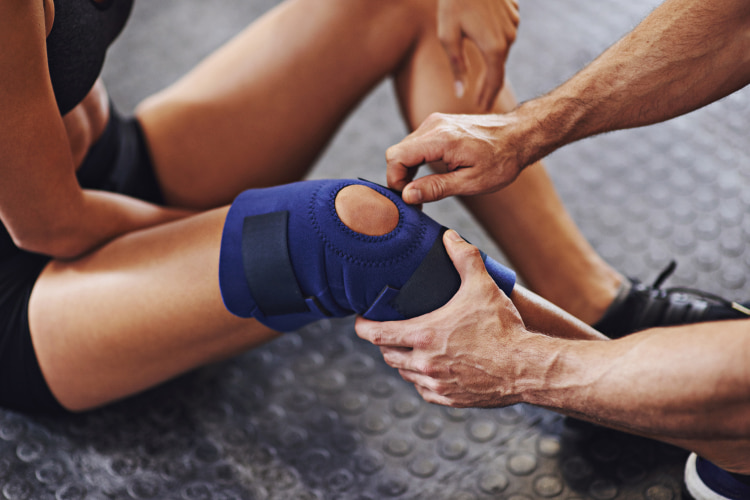Participating in sports is a testament to the human spirit’s pursuit of physical excellence and achievement. Athletes, whether amateur or professional, dedicate countless hours to honing their skills. And they push their bodies to the outer limits of performance.
Sports injuries are an unfortunate reality in the world of athletics. And sometimes, the consequences can be excruciatingly painful.
In this guide, we will delve into the most painful sports injuries. We will focus on the challenges of recovery and how athletes can take preventive measures to safeguard themselves from such agonizing experiences.
The Most Painful Injury
Every injury carries its own share of pain and discomfort. But some stand out for their sheer intensity and the anguish they inflict.
In this section, we delve into the realm of sports injuries. We will explore what is often considered the pinnacle of pain—the most excruciating one.
We will go from the searing agony of a torn anterior cruciate ligament (ACL) to the torment of a herniated disc. And we will uncover the most painful injury that athletes dread and endure.
1. The Agony of an ACL Tear
The pain experienced during an ACL tear is often described as a sharp, intense sensation in the knee. Athletes who have gone through this injury often compare it to being hit by a lightning bolt. The pain is so severe that it can make even the toughest athletes crumble to the ground in agony.
2. The Lingering Pain of a Herniated Disc
Another one of the most painful injuries is a herniated disc. It’s often experienced by athletes engaged in contact sports. A herniated disc occurs when a spinal disc’s soft, gel-like center pushes through a tear in the outer layer. It puts pressure on nearby nerves.
The pain from a herniated disc can be unbearable. It radiates from the back down to the legs or arms, depending on the affected area of the spine. Athletes with this injury often find it challenging to perform even basic movements.
3. The Torture of a Compound Fracture
In the realm of most painful injuries, compound fractures deserve a mention. These fractures occur when a broken bone pierces through the skin. Not exclusive to sports. But they can happen during high-impact activities like football or motocross.
The pain experienced in a compound fracture is not only due to the initial break. But it’s also the exposed bone and soft tissue damage. Athletes who suffer from this injury often need immediate medical attention. And the road to recovery is long and painful.

Hardest Injuries to Recover From
The initial pain of a sports injury can be excruciating. But the journey to recovery can be equally challenging. Athletes face not only physical but also mental and emotional hurdles. It’s because they work their way back to peak performance.
In this block, we will focus on the hardest traumas to recover from.
The Grueling Rehabilitation of an ACL Tear
Recovering from an ACL tear is a demanding process. It requires patience and determination. Following surgery, athletes must undergo physical therapy. It’s to rebuild strength, flexibility, and stability in the knee. It can take several months, or even a year, before an athlete can return to their sport.
The Long Road of a Herniated Disc Recovery
Herniated disc recovery is another hardest injury to recover from. Treatment options range. They’re physical therapy and pain management to surgery in severe cases. Athletes may experience intermittent pain and discomfort for an extended period. It impacts their training and competition schedules.
The Agonizing Rehabilitation of a Compound Fracture
Recovering from a compound fracture involves surgeries to repair the bone and soft tissue damage followed by months of rehabilitation. Athletes often need to regain strength and mobility in the injured area. While they’re managing pain and the risk of infection.
The Painful Path of a Dislocated Joint Recovery
This is another one of the hardest injuries to recover from. Recovery from a dislocated joint is not only physically demanding. But it is also emotionally taxing. Athletes must go through a period of immobilization. It must be followed by a gradual return to activity. The risk of future dislocations can lead to anxiety and apprehension.

Prevention and Care
Preventing sports injuries and providing proper care when they do occur are essential. Here are some strategies and tips for athletes to cut their risk of painful injuries:
Most painful sports injuries prevention strategies:
- Proper Conditioning. Adequate strength, flexibility, and endurance training can help reduce the risk of injuries.
- Warming Up and Cooling Down. A thorough warm-up before exercise and a proper cool-down routine afterward can prevent muscle strains.
- Proper Technique. Athletes should receive proper coaching. And they must follow correct techniques for their sport to avoid overuse injuries.
- Protective Gear. Using appropriate protective gear can significantly reduce the risk of traumatic injuries.
- Rest and Recovery. Adequate rest between intense training sessions is crucial. It’s to prevent overtraining and fatigue-related injuries.
Immediate care for most painful sports injuries:
- R.I.C.E. Protocol. Rest, Ice, Compression, and Elevation are essential for initial care of most injuries.
- Seek Medical Attention. For severe injuries, immediate medical attention is crucial. It’s to ensure proper diagnosis and treatment.
- Physical Therapy. Many injuries benefit from physical therapy to aid in recovery.
Conclusion
Sports injuries can be incredibly painful and emotionally taxing. But they are an inherent risk in the world of athletics. Understanding the most painful injuries and the challenges of recovery is essential for:
- Athletes.
- Coaches.
- Healthcare professionals.
Don’t forget delaying treatment can lead to further complications. Don’t make your recovery more difficult – contact healthcare specialists!
FAQ
What is the worst sports injury ever?
The “worst” sports injury is subjective. But injuries like torn ACLs, herniated discs, compound fractures, and dislocated joints are often considered among the most painful and challenging to recover from.
Why are some injuries harder to recover from than others?
Some injuries are harder to recover from. It’s due to factors such as:
– Injury severity.
– Type and location.
– Surgical intervention.
– Age and health of the athlete.
– Rehabilitation compliance.
– Psychological factors.
– Support systems.
How can athletes prevent painful injuries?
Athletes can prevent painful injuries by:
– Maintaining proper conditioning.
– Warming up and cooling down.
– Using protective gear.
– Learning and practicing proper technique.
– Allowing for adequate rest and recovery.
– Paying attention to their body’s warning signs.


Related posts
Today is an era dominated by digital conveniences and desk-bound occupations. So, the effects of a sedentary lifestyle have emerged as a pervasive concern.
Our guide aims to equip people with the knowledge to understand the intricacies of internal injuries. They are arising as a result of car accidents. Join us on this informative trip.
Beyond merely treating injuries, chiropractors work to enhance the body's biomechanics. It allows sportsmen to move more potently and reduces the risk of future injuries.